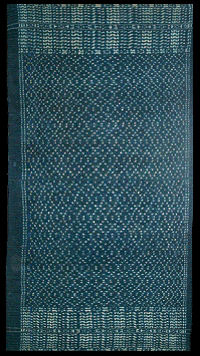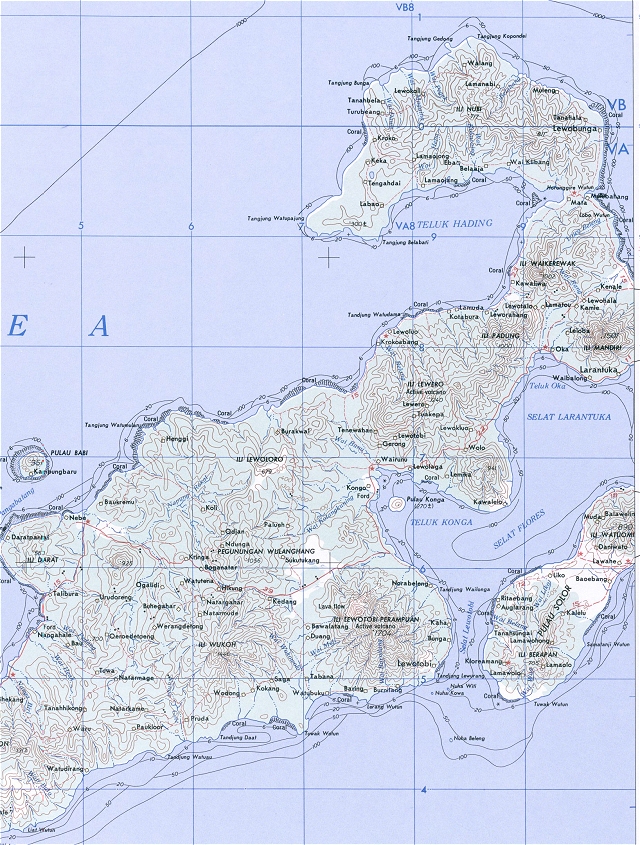Flores's little known Bird's Head Peninsula
Little is known about their textiles. Most authors just ignore them, and if they are covered at all, it is in a coda with precious little concrete information. The most important reason for this lack of information is dearth of specimens with reliable provenance, which makes it hard to tag them with certainty. The few cloths of the region that did make it to western collections in the early 20th C. were often labeled 'Larantuka', after the nearest town, or even 'Solor', as this was where they were acquired or shipped from. A notable exception form the circa 100 cloths from this region that were collected by Ernst Vatter in 1928-'29, and preserved by the Museum für Völkerkunde in Frankfurt (though, as of 2014, never exhibited in full - a dozen Flores cloths were shown in Hamilton's exhibition in Fowler Museum in 1994, but none of the treasures from the Solor and Alor archipelago). Vatter recorded their provenance and other details meticulously, so that they can serve as a reference for the identification of textiles from the region, which, in the case of sarongs made for bridewealth, can be difficult because of their similarity. A unique feature of all bridewealth ikat from the Bird's Head Peninsula is that the weft (of course normally invisible) also has to be morinda, whereas in the wider Lamaholot region and on the rest of Flores indigo weft is generally used because indigo is a much easier dye both to acquire and to work with: no digging for roots, and no need for mordanting. This purity of colour, and the often repeated or prolonged steeping in morinda, give cloths from the region a remarkably strong presence. Ili Mandiri - idiosyncratic weaving stylesIli Mandiri produces textiles of excellent quality, distinct from all other regions on Flores except the neighbouring regions on the peninsula, and totally different from Adonara, from which it is separated by a strait only about half a mile wide. The most precious are the kewatek méan, (see PC # 097), used as bridewealth. They have the red-brown appearance of méan, morinda, very dark in parts thanks to overdyeing with indigo, a process called belapit, considered essential for bridewealth. Each of the two panels has one wide band, called kenirek belen, with rhombic or patola-inspired motifs of precise, angular execution.Two other types of sarong, kewatek makasar and kewatek kenumak, though considered of lesser value, may also be used in bridal exchanges. A more common type of Ili Mandiri sarongs is the kenirek miten, made for daily wear, which is dyed with indigo only. They are decorated with patola inspired patterns built up of tiny white dots which give them a unique look, immediately recognizable. Even these 'common' Ili Mandiri textiles are hard to find, and there are few in known collections. Bama - fine bridewealth sarongsThe few Bama ikats that are known, or rather published, are nearly all bridewealth sarongs, kewatek méan, very similar to those from Ili Mandiri, but with less belapit, and likely to be done in morinda entirely. The quality of the weaving tends to be very high.Lobe Tobi - vanished gloryThe production of high quality ikat in Lobe Tobi appears to have ceased long ago, probably in the 1930s, but the few old bridewealth sarongs, tenepa, that have survived thanks to collection by Ernst Vatter show that fabulous weaving was once produced in the region. Overall patterning is similar to cloths from Ili Mandiri, but the motifs are less angular, more 'soft edge', and some specimens appear to have had flowery patterns similar to those of Sikka. |




